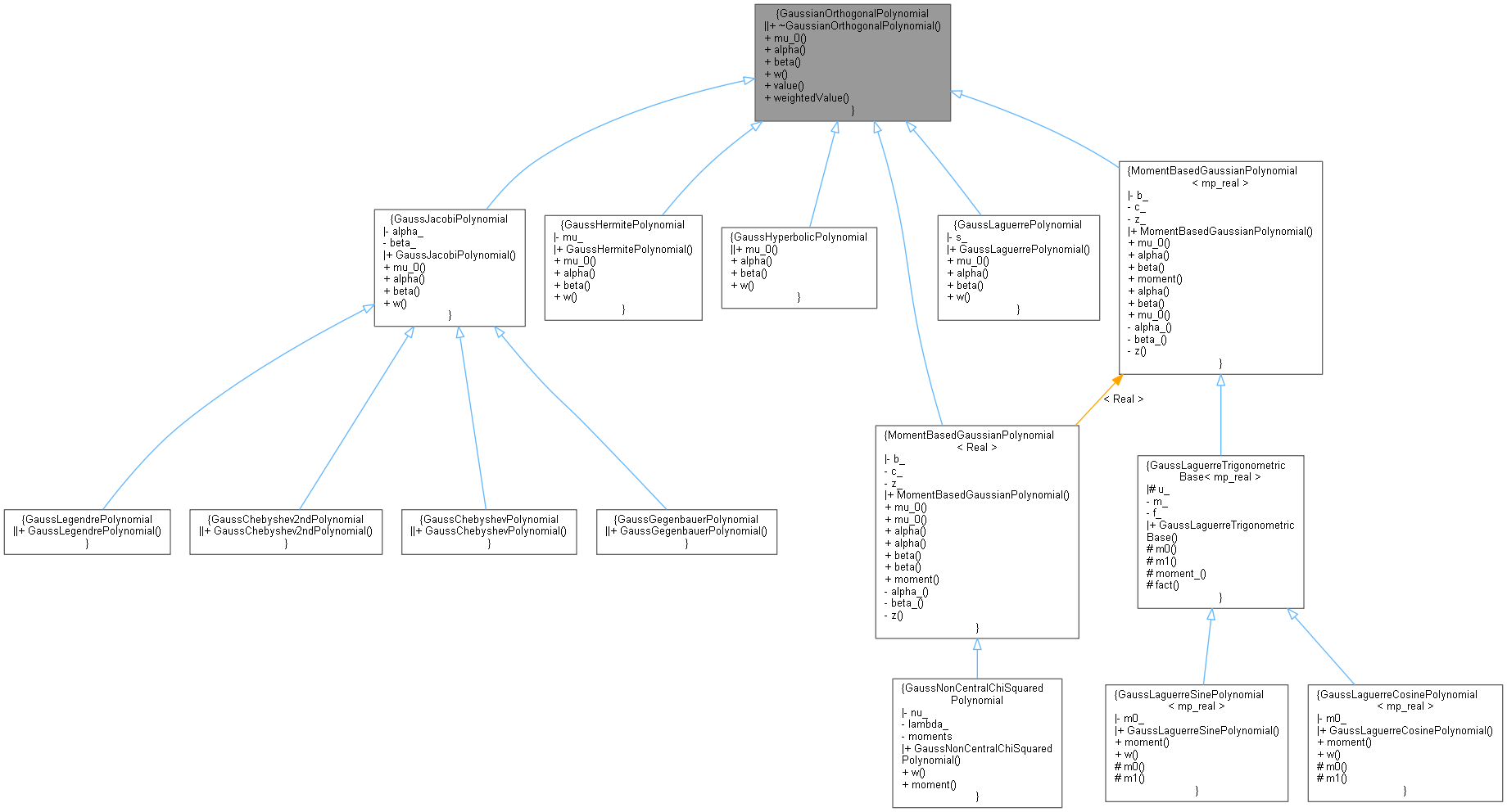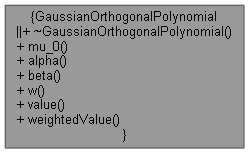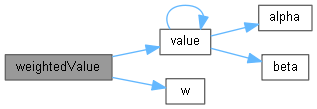orthogonal polynomial for Gaussian quadratures More...
#include <gaussianorthogonalpolynomial.hpp>
 Inheritance diagram for GaussianOrthogonalPolynomial:
Inheritance diagram for GaussianOrthogonalPolynomial: Collaboration diagram for GaussianOrthogonalPolynomial:
Collaboration diagram for GaussianOrthogonalPolynomial:Public Member Functions | |
| virtual | ~GaussianOrthogonalPolynomial ()=default |
| virtual Real | mu_0 () const =0 |
| virtual Real | alpha (Size i) const =0 |
| virtual Real | beta (Size i) const =0 |
| virtual Real | w (Real x) const =0 |
| Real | value (Size i, Real x) const |
| Real | weightedValue (Size i, Real x) const |
Detailed Description
orthogonal polynomial for Gaussian quadratures
References: Gauss quadratures and orthogonal polynomials
G.H. Gloub and J.H. Welsch: Calculation of Gauss quadrature rule. Math. Comput. 23 (1986), 221-230
"Numerical Recipes in C", 2nd edition, Press, Teukolsky, Vetterling, Flannery,
The polynomials are defined by the three-term recurrence relation
\[ P_{k+1}(x)=(x-\alpha_k) P_k(x) - \beta_k P_{k-1}(x) \]
and
\[ \mu_0 = \int{w(x)dx} \]
Definition at line 50 of file gaussianorthogonalpolynomial.hpp.
Constructor & Destructor Documentation
◆ ~GaussianOrthogonalPolynomial()
|
virtualdefault |
Member Function Documentation
◆ mu_0()
|
pure virtual |
Implemented in MomentBasedGaussianPolynomial< mp_real >, MomentBasedGaussianPolynomial< Real >, GaussLaguerrePolynomial, GaussHermitePolynomial, GaussJacobiPolynomial, GaussHyperbolicPolynomial, MomentBasedGaussianPolynomial< mp_real >, and MomentBasedGaussianPolynomial< Real >.
 Here is the caller graph for this function:
Here is the caller graph for this function:◆ alpha()
Implemented in GaussLaguerrePolynomial, GaussHermitePolynomial, GaussJacobiPolynomial, GaussHyperbolicPolynomial, MomentBasedGaussianPolynomial< mp_real >, MomentBasedGaussianPolynomial< Real >, MomentBasedGaussianPolynomial< mp_real >, and MomentBasedGaussianPolynomial< Real >.
 Here is the caller graph for this function:
Here is the caller graph for this function:◆ beta()
Implemented in GaussLaguerrePolynomial, GaussHermitePolynomial, GaussJacobiPolynomial, GaussHyperbolicPolynomial, MomentBasedGaussianPolynomial< mp_real >, MomentBasedGaussianPolynomial< Real >, MomentBasedGaussianPolynomial< mp_real >, and MomentBasedGaussianPolynomial< Real >.
 Here is the caller graph for this function:
Here is the caller graph for this function:◆ w()
Implemented in GaussNonCentralChiSquaredPolynomial, GaussLaguerrePolynomial, GaussHermitePolynomial, GaussJacobiPolynomial, GaussHyperbolicPolynomial, GaussLaguerreCosinePolynomial< mp_real >, and GaussLaguerreSinePolynomial< mp_real >.
 Here is the caller graph for this function:
Here is the caller graph for this function:◆ value()
Definition at line 32 of file gaussianorthogonalpolynomial.cpp.
 Here is the call graph for this function:
Here is the call graph for this function: Here is the caller graph for this function:
Here is the caller graph for this function:◆ weightedValue()
Definition at line 44 of file gaussianorthogonalpolynomial.cpp.
 Here is the call graph for this function:
Here is the call graph for this function: Here is the caller graph for this function:
Here is the caller graph for this function:








